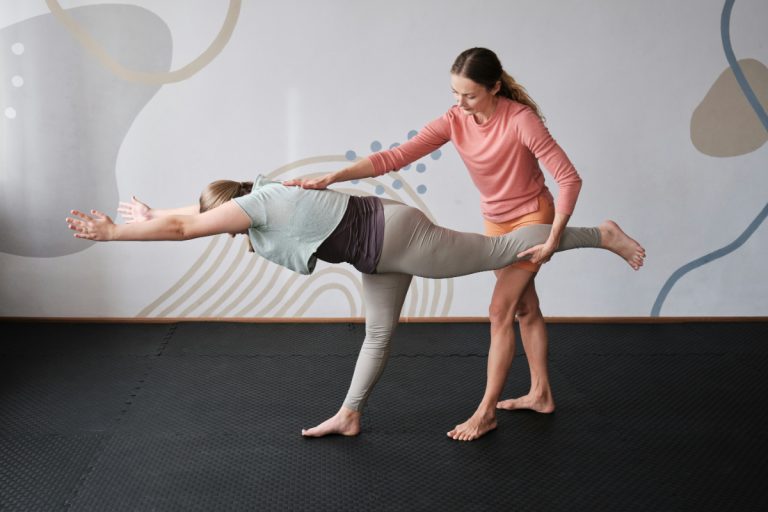3 Minute Mindfulness Exercises: Quick and Easy Ways to Calm Your Mind
Do you ever feel overwhelmed and stressed out by the demands of your daily life? Taking just three minutes out of your day to practice mindfulness exercises can help you manage stress and improve your overall well-being. Mindfulness is the practice of being fully present in the moment, without judgment or distraction.
Research has shown that practicing mindfulness regularly can have a positive impact on both your physical and mental health. It can help reduce stress, anxiety, and depression, as well as improve sleep, focus, and cognitive function. The good news is that you don’t need to spend hours meditating to reap the benefits of mindfulness. In fact, just three minutes of mindfulness practice each day can make a significant difference in your life.
In this article, we will explore a few simple yet effective mindfulness exercises that you can do in just three minutes. These exercises are designed to help you cultivate a sense of calm and relaxation, even in the midst of a busy day. So, whether you’re at work, at home, or on the go, you can take a few minutes to practice mindfulness and improve your well-being.

Basics of Mindfulness
Understanding Mindfulness
Mindfulness is the practice of being present and fully engaged in the current moment. It involves paying attention to your thoughts, feelings, and surroundings without judgment or distraction. By focusing on the present moment, you can reduce stress and anxiety, improve your emotional well-being, and increase your overall sense of happiness.
Mindfulness can be practiced in many different ways, including meditation, breathing exercises, and yoga. While it may seem difficult at first, with practice, mindfulness can become a natural part of your daily routine.
Benefits of Short Mindfulness Exercises
Short mindfulness exercises, such as 3-minute exercises, can provide many benefits in a short amount of time. These exercises can help you to:
- Reduce stress and anxiety
- Improve focus and concentration
- Boost your mood and emotional well-being
- Increase self-awareness and self-compassion
By taking just a few minutes out of your day to practice mindfulness, you can improve your overall health and well-being. So why not give it a try?
Quick Mindfulness Techniques
If you’re looking for a quick way to relieve stress, improve focus, and boost your mood, then mindfulness exercises are a great option. These exercises can be done in just a few minutes and are perfect for those who are short on time or new to mindfulness. In this section, we’ll cover three different techniques that you can try out today.
Breathing Exercises
Breathing exercises are a simple and effective way to practice mindfulness. To get started, find a quiet place where you can sit comfortably. Close your eyes and take a deep breath in through your nose, filling your lungs with air. Hold your breath for a few seconds, then slowly exhale through your mouth. Repeat this process for a few minutes, focusing on your breath and letting go of any distracting thoughts. You can also try counting your breaths or saying a calming phrase to yourself as you breathe.
Body Scan Practice
Body scan practice is another great way to practice mindfulness. To do this exercise, lie down on your back and close your eyes. Take a few deep breaths to relax your body and mind. Then, starting at your toes, focus your attention on each part of your body, one at a time. Notice any sensations or feelings in each area and let go of any tension or discomfort. Move slowly up your body, paying attention to your legs, hips, stomach, chest, arms, and head. Take your time and try to stay present in the moment.
Sensory Observation
Sensory observation is a mindfulness exercise that involves using your senses to focus on the present moment. To do this exercise, find a quiet place where you can sit comfortably. Close your eyes and take a few deep breaths to relax. Then, slowly open your eyes and look around you. Notice the colors, shapes, and textures of the objects in your environment. Next, focus on your sense of hearing. Listen to the sounds around you, both near and far. Finally, focus on your sense of touch. Notice the sensations in your body, such as the feeling of your clothes against your skin or the temperature of the air around you. Take a few minutes to fully immerse yourself in the present moment.
These three quick mindfulness techniques are a great way to get started with mindfulness practice. Try them out for yourself and see how they can help you feel more calm, centered, and focused.
Incorporating Mindfulness into Your Day
If you’re looking for a way to reduce stress and improve your overall well-being, consider incorporating mindfulness into your daily routine. By taking just a few minutes each day to practice mindfulness, you can experience a range of benefits, from increased focus to reduced anxiety.
Mindful Morning Routine
Start your day off on the right foot by incorporating mindfulness into your morning routine. Instead of reaching for your phone as soon as you wake up, take a few deep breaths and focus on your breath. You can also try a simple stretching routine or a short meditation to help you start your day with a clear mind.
Mindful Breaks at Work
If you find yourself feeling stressed or overwhelmed at work, taking a mindful break can help you reset and refocus. Try taking a few deep breaths, going for a short walk, or doing a quick mindfulness meditation to help you clear your mind and return to your work with renewed focus.
Mindful Evening Wind Down
Wind down at the end of the day by incorporating mindfulness into your evening routine. Try a relaxing yoga routine or a short meditation to help you let go of the stresses of the day and prepare for a restful night’s sleep. You can also try journaling or practicing gratitude to help you reflect on the day and cultivate a positive mindset.
By incorporating mindfulness into your daily routine, you can experience a range of benefits, from increased focus to reduced anxiety. Try incorporating these simple mindfulness practices into your day to start experiencing the benefits for yourself.






